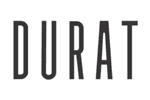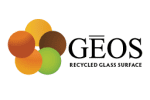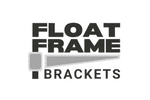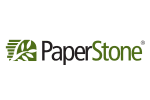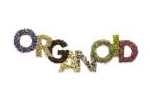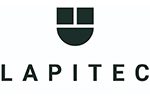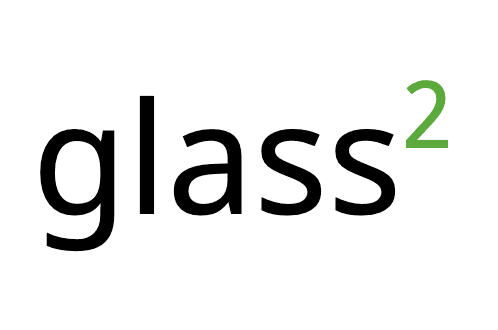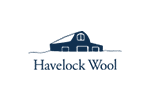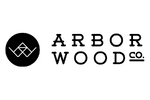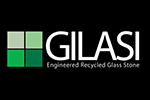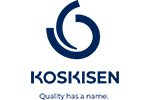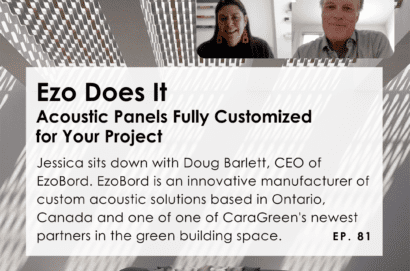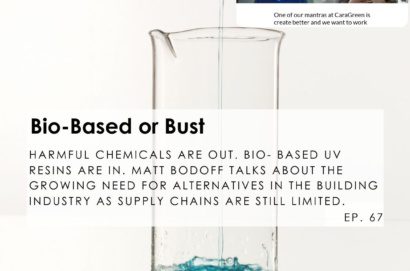Discover how you can green your life by building a knowledgebase of current sustainable and eco-savvy trends. This is Build Green Live Green. In this episode, we will be discussing how to use cork as an exterior building product. We are here today with Jessica McNaughton of CaraGreen and Larry of EchoShield International.
JESSICA: Hi, this is Build Green Live Green. I'm Jessica McNaughton with CaraGreen. And today we are speaking with Larry from EcoShield International. Larry, would you like to introduce yourself and talk a little bit about EcoShield and what you guys do?
LARRY: Well, thank you so much for having me on your podcast. It's a great opportunity to reach a wider audience and talk about cork for the outside of homes and buildings. We started a little bit about a year ago and what we do is we provide the application for a product called Thermal CorkShield. It is a cork-based alternative to stucco and paint. It is applied with an air compressor. It's projected onto the building and it provides a thermal barrier for the outside of your home or your apartment building or warehouse or whatever structure that you put it on.
JESSICA: So, with the, so the composition of it is not, obviously, it's not just cork. So, what are the other ingredients that are used in the application? I'm assuming it's wet applied.
LARRY: Yes, it is. We have a proprietary blend of polymers, resins, if you want a specific color, we provide that dye as well. So, there's, so there's no, there's no paint. We try not to use the “p” word when we talk about, when we talk about our product because people think that's what it is because it kind of looks like that, but it's really a lot more.
JESSICA: It seems like a lot more textured as well.
LARRY: It is, yes. It comes in two different textures. There's a little coarser texture and then a finer texture. From the street you really can't tell which is which actually.
JESSICA: So, when it dries, does it adhere to the building or is there a base layer that you put down that it adheres to?
LARRY: It applies best to a cementitious substrate, meaning that if you've got a stucco or a brick or any sort of anything with cement base, it sticks really well. We can also apply to wood or metal or very many other types of products, but it does apply wet and it applies in two coats and we have to let it kind of dry between coats and then it cures. And once it's on, you can't remove it. It's, you can't scratch it off. You can't take a paint scraper to it. I'm not sure how one would remove it. So, it's one of these things like, okay, I really, really want this product on my house and I'm going to love it for a long time.
JESSICA: Great. So, let's get back to the component of this that kind of makes it a differentiator for some of the other products that are on the market. And that's cork. And we've recently taken on a cork line and you and I were speaking earlier, and we did some training on cork flooring today and we've taken on the Expanko line, but we've talked a lot about the thermal benefits of cork, which I actually didn't know a lot about. So is the inclusion of cork in your product, is that the, the real, that's the thermal part of this, correct?
LARRY: Yes, very much so. The one thing you have to remember about cork is it protects an oak tree. And so, all the benefits that the oak tree gets from its bark and the thick coating of cork, your house can get as well.
JESSICA: And cork bark is something that we love at CaraGreen because the sustainability story is a strong one. It's not a cork tree that gets, you know, harvested. It's just the bark in the bark is harvested every nine years. It's a very sustainable practice. And the bark that is usually used in building materials is post-industrial bark from the cork industry, like the wine making industry. So, it really has a good sustainability story. So, it's not just the thermal benefits, but you've also got, you know, the added benefit of this being a rapidly renewable material.
LARRY: Oh, it really is, from what I understand, people can harvest cork from the same tree for about 150 years. So, they start when the tree is about 20 years old and then for the next 150 years, they are harvesting the bark of that tree.
JESSICA: So, some of the other benefits of cork are, you know, mold resistance and also you know, it has acoustic properties. Do those attributes play into this application because it's an exterior application?
LARRY: Oh, very much so. In certain parts of the country, coastal areas you get, if you go and look at a stucco house, I keep, I hate beating up on stucco, but if you sometimes if you go look at a house that's made of stucco or many other types of material, you'll see there's kind of a black, grimy, slimy look to it in certain parts that's mold or mildew and mold or mildew will not grow on our product, the Thermal Cork Shield, because it is infused with the cork. In addition, and I didn't realize I would enjoy the acoustic barrier as much, but I have, of course, I have my product on my house and I rarely hear any traffic noise and I live about a block and a half from a major highway in Dallas.
JESSICA: Wow. So, thinking about this product, you know, I'm trying to think of some of the challenges. I think, you know, obviously awareness of this as a solution will be a big challenge. Who are the applicators? I feel like you would need to educate maybe the homeowner and obviously architects and designers would be, you know, even kind of the Holy Grail of them really understanding and starting to specify this. But what about the installers? Are there people that know how to install this today or is that a, do they already have the tools, and this is simply a substitution for another mixture that they would be applying or is there a different application process?
LARRY: That is, that varies from sort of applicator to applicator. I don't know about other companies. I know of the training that my business partner and I went through, and it is very specific to this product. You would not be able to just say purchase, you know, purchase some of it for your house and pretend you're going to apply it, you would end up with a huge mess. So, two days of training on how to mask off the windows and the doors, how to mix it, what's it supposed to look like, how is it projected, the timing to wait you really need to know what you're doing when you're an applicator.
JESSICA: So, the actual mixture itself, where is, where is it manufactured?
LARRY: Two different places for us, one is in Toronto. Outside of Toronto, and then a finer textured version of the product is made in Spain, and that's where the main company is.
JESSICA: And do you know the percentage of the mixture that is cork?
LARRY: That I don't know. They don't share a lot of those proprietary details with me. I wish they would because people have asked me that and I have asked that question and they said, “that's a really good question, Larry,” and then we'd go onto another topic. And the reason why they have done that, there is, from what I’ve heard, and I would need to verify that, the gentleman who came up with the product in Spain had a business partner and the business partner decided he wanted to go do his own cork cladding. But he didn't have the formula. So, he's sort of guessed at it and it's not a very good product.
JESSICA: So, if you were talking about new construction, because you've talked about, you know, applying it over you know, other kind of wall structures, would you recommend a concrete base? I mean, I know you said cementitious. Would you recommend like a cement board or in new construction, what substrate would you recommend for this to be sprayed on?
LARRY: Cement board looks really, really great. We have done a quite a few tests on it and it looks fantastic. It comes out very smooth. There's no bumps, no lumps, no ripples. It looks very, very nice on that. Yes, that would be, that would be the ideal.
JESSICA: And so, what are your plans for, you know, really taking this to market? Are you, you know, kind of looking in your local market or are you planning on, you know, marketing campaigns? How are you going to create awareness of this, you know, Thermal Cork Shield in general, like to the masses?
LARRY: Oddly enough we have hired a very good marketing, business to business marketing company here in North Texas and we've been working with them since June, I guess. And we are focusing more on getting the information out to architects and contractors, companies that build large manufacturing facilities, warehouses. North Texas is like number two or three in the nation in warehouse space, so, we have plenty of spaces that need to be sprayed.
JESSICA: And so, I have a warehouse and right now it's basically one of these tilt-up sheet metal construction type structures. What is your pitch to the warehouse manager about why your product is going to benefit their warehouse?
LARRY: I would have you, as the owner, take a look at your heating and/or cooling bills over the last year or so. And I can tell you with confidence that we can reduce the usage of, the kilowatts used or the, maybe gas, whatever you're using for that by about 25 to 30%. So, if you're looking to save money on your utilities every single month, you would want to use Thermal Cork Shield. In addition, we are going to protect that building and make it look very, very beautiful. We come with a 10-year warranty. You're not going to have to touch it for the next 10 years. So, you're going to save on installation, you're going to save on maintenance and oh, by the way, nobody ever dislike saving on their utility bills.
JESSICA: So, then I have a couple more questions here. So, I'm in a warehouse space and I only lease a portion of the warehouse space, but I want your product. Can I spray it on the interior?
LARRY: You certainly can. We have seen that done in a number of facilities where, you know, the person doesn't own the space, but they can do something, you know, from the first layer inside. We can go between the very first layer from the exterior between the sheet rock or if it's like, you know your warehouse space and the owner doesn't mind, we can spray it directly on the inside of that building and you get all the same benefits.
JESSICA: Now what about, you know, I often see acoustic, like an acoustic spray treatment on large steel beams and things like that in some of these industrial spaces or these kinds of open floor plan offices. Is that something this is suitable for like an indoor acoustic treatment on some of those kinds of larger structural elements?
LARRY: Oh, very much so. We can, we go on a lot easier. Some of those foam sprays I am not sure what the content is. I do have that on my roof deck in my house. This I had done six years ago or so before I even knew about Thermal Cork Shield and I very much would have preferred our product to the foam, because I wanted to be here when they were spraying my foam insulation you know, before they put the sheet rock on. Yeah. And they said, “Oh no, you can't be here for that.”
JESSICA: Yeah. Don't get me started. We just did a blog on havelock wool insulation versus spray foam and fiberglass and it’s become so immune to- we’re putting so many chemicals-
LARRY: They had the respirators on. It's like, are you sure this is safe?
JESSICA: Read about that spray foam now. I mean it's like, it is, you know, mesothelioma point, you know, 2.0.
LARRY: I think I'd prefer not. I think I'd prefer not to at this point, since its in my house.
JESSICA: You've been off gassing for five years. Don't worry about it. You're done.
LARRY: Okay. Don't worry about it. I'm old anyway. I don't have that much long to go. I really would prefer if our product was in my ceiling and between the walls, just because it's certified green US Green Building Certified green, you don't even have to use a respirator if you want to put on a like a handkerchief over your mouth, because it can get a little bit dusty and things, little particles do fly around, but there's nothing that's going to damage anybody's lungs.
JESSICA: So, an exterior use, you mentioned some coloring, so is there an ability to pigment it and is there an ability to color match? Are you limited in the colors and does it fade over time, UV when exposed to sunlight?
LARRY: That's a really good question. Currently we have, I would say 24. No, I would have to go back and count. 24 to 28 standard colors that the product comes in. If you want to match your corporate colors for your warehouse that you have, you’ve got you know, highlighter green and gray, let's say for instance. We can, you know, provide us with the colors, say, say a color match from a paint store. We send that off to Spain. They have their scientists come up with a matching dye and then we add that right before we spray that on to your building.
JESSICA: And then UV.
LARRY: It is very, very resistant to fading. The one thing that we compare ourselves to is the “p” word, paint. And paint fades at about three, four or 5% a year, depending on where you live. Thermal Cork Shield fades at less than 1% per year. So maybe after 10 years you'll need to freshen it up a little bit.
JESSICA: Great. Well I think this is great. I love seeing these sustainable materials like cork being used, you know, beyond just the flooring. I saw it in a rubber flooring today, now in an exterior application and Thermal Cork Shield. And I really think, you know, I'd like to see cork in general make its way into, you know, more building materials. I think it's a, it's a rapidly renewable one. There's, you know, it's widely available. There's a fixed supply chain for it. You know, these European countries have been using it for years. Some of these cork installations have been in place for you know, 60, 70 years. So, it really is an amazing material and you know, I love these materials that, you know, nature has evolved over time to create these, this protective insulating material to, you know, protect these cork trees and now we're taking those features and we're building them into the very thing that surrounds us as well and protects us. So, I really love what you're doing at EcoShield International. Can you let the listeners know, you know, where to find your website and how to reach you if they have any questions about the Thermal Cork Shield?
LARRY: The easiest way to do that would be to go to www.ecoshieldinternational.com and they can see videos of the application. They can see my rundown 1969 house that we transformed and turned it into a soft, contemporary, stylish place.
JESSICA: Great. LARRY, thank you so much. And I will hope to talk to you soon.
LARRY: The one thing that I always want to, that I always tell people is that you don't have to believe in climate change to like our product. You just have to believe that your electricity provider will find a way to raise your rates over the next 10 years. And if you don't believe in that, we can't really help you after that point.
JESSICA: Well, you're a capitalist, Larry. I'm an environmentalist. So, I do believe in climate change, but I also believe in what you guys are doing. So, if you can save me on my electric bill and save the planet at the same time, I'm with you.
LARRY: It's a win win for everybody.
JESSICA: It sure is. This is Build Green Live Green.

